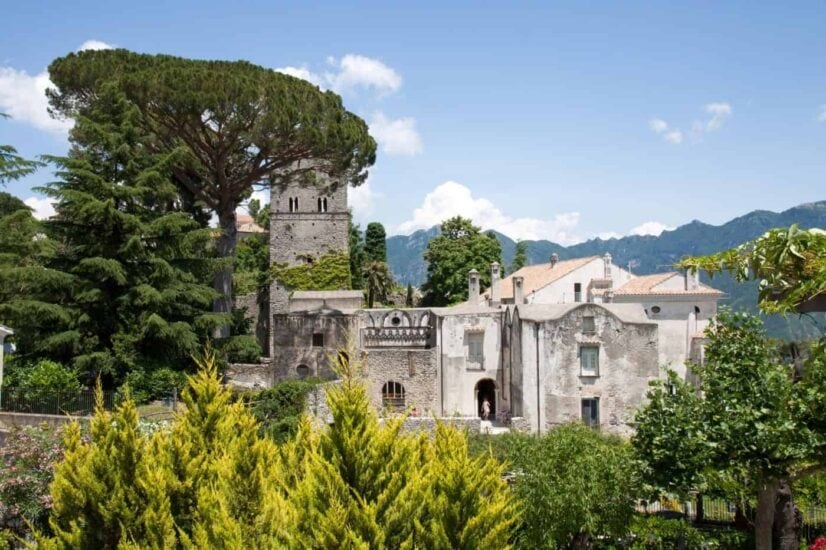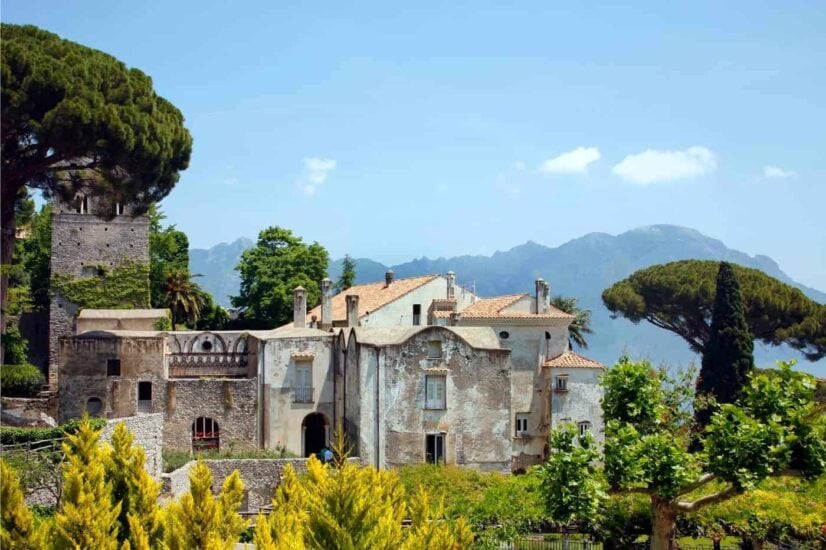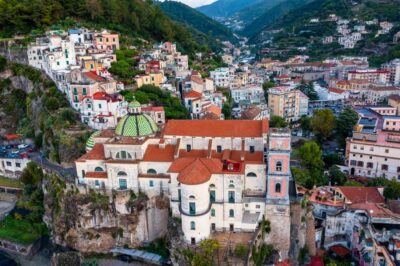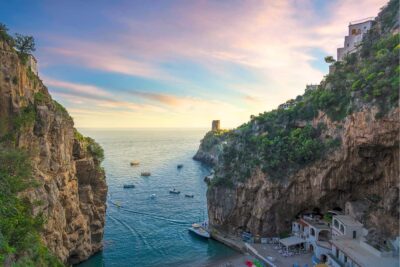Villa Rufolo is a prestigious building located in the historical centre of Ravello right in front of the Cathedral in Piazza del Vescovado.
The original building dates back to the 13th century, and was then renovated several times during the 19th century until the version we can admire today.
It is the jewel of the municipality and preserves centuries of history of the Republic of Amalfi.
It is a unique building, full of signs of its history as a crossroads of cultural and commercial exchanges, so much so that it has been called ‘a small Alhambra’.
The Villa is very famous and hosts, among other events, the Ravello Festival that sees world-class artists come to the Amalfi Coast every year.
Let us go into the specifics and get to know this architectural treasure better.
Indice dei contenuti
The history of the Rufolo family

The Rufolo family became prestigious in the South of Italy during the second half of the 13th century.
Their presence in Ravello dates back to the 11th century. Their household held several properties in the municipality and even in 1150 Giovanni Rufolo ascended the bishop’s chair of the town and remained there until his death.
This status helped raise the social standing of the family so much that it led one member, Nicola Rufolo, to marry one of the most powerful women of the South: Sigilgaida della Marra, the sister of Angelo I, the treasurer of the Kingdom of Frederick II.
During the 13th century, Nicola Rufolo had several architectural works realised in both Ravello and Giovinazzo; moreover, taking advantage of his wife’s and his family’s position of power, he and his sons specialised in the economic management of the Kingdom.
Later, after the War of the Vespers and after the Angevins came to power, the Rufolo family capitulated.
In 1283, some members of the family were captured and their lands confiscated. Some were even sentenced to death: the most prominent was Lorenzo Rufolo.
It was probably from him that Boccaccio drew inspiration for his novella about ‘Landolfo Rufolo’, a merchant procurer who, in order to multiply his wealth, invested all his possessions, ruining himself and his family.
Boccaccio’s novella ends with a happy ending that symbolises good fortune, something the Rufolo family lacked, in fact.
In the 15th century, the Rufolo family lost everything and Peregrino Rufolo, bishop of Ravello, described himself as the last of his line.
Villa Rufolo in its beauty

Of this jewel and immense heritage, one part has been left to the elements and therefore a victim of time and neglect; the other part, however, has been given new life.
In ten centuries of history, the building has seen different architectural styles: from Arab to Norman, to a more Romanesque style in the 19th century.
The Villa, in fact, after the events of the Rufolo family we have just seen, was sold in the 19th century to the Scotsman Francis Neville Reid, who renovated it, giving it the appearance we can admire today.
The villa is accessed through an opening in the entrance tower. The tower actually has a purely ornamental function, surmounted by an umbrella dome decorated with interlaced arches supported by terracotta columns.

Originally, the stone surfaces were decorated with lime paint; while in the dome, the use of a transparent yellow pigment, probably ceramic glaze ground after firing, is particular. At the four corners are statues representing the four seasons.
Crossing the avenue that opens beyond the portal, surrounded by cypress and linden trees, one arrives at the Cloister.
This has three wings of which only thirty-six small columns remain today on the north side and two intact arches on the left.
On the southern side is a portico of small columns decorated with interlacing and leaf decorations.

Just outside the cloister, after a flight of steps, one reaches the Torre Maggiore, which faces the bell tower of Ravello Cathedral and overlooks the terraces of the Amalfi Coast, home to colourful, flower-filled gardens for much of the year.
The Tower is thirty metres high and has three floors. It is undoubtedly the oldest part of the building, a symbol of the social, economic and political power of the Rufolo family in the early part of their lives.
In addition to the Tower, there is a marvellous Garden with the so-called Hall of the Knights, with enormous ogival arches. Tower and Hall were connected by rooms of which only the remains can be seen today.
Opposite these two architectural presences is the Garden: a true exaltation of 19th-century Romanticism that Neville Reid himself designed, giving rise to a school for gardeners that still exists today.
Reid’s era was the time of the revival of the villa’s gardens. Reid decided to employ several exotic plants, expanding his activity of enriching the green areas until it became a philanthropic work for the benefit of the citizens.
So much so that he had an aqueduct built at his own expense, bringing water from the Tabernacle district to the Piazza del Vescovado, where a public fountain can still be seen today.
The garden unfortunately suffered several demolitions, not least in 1955 when the construction of a provincial road destroyed the upper part of the garden.
The area of the Villa’s Well is the one that inspired Richard Wagner for his setting of “Klingsor’s enchanted garden” from Parsifal. A little corner of paradise with exotic plants, pines and cypresses.
The Belvedere of Villa Rufolo is the one that today hosts shows and events in the city, with a stage stretching out into the void that attracts millions of tourists, onlookers and spectators every year.

As for the building’s interior, proceeding towards the northern side of the garden, one can admire the remains of the Balnea, the area used for thermal cures that has only recently re-emerged.
Then the Turkish Bath, where the remains of the water channels and the dome, still intact today, are clearly visible. From the gardens one then accesses the lower part of the structure, where one can observe the development of the colonnade supporting the cloister on the floor above. Here there are rooms now used as a theatre.
Ascending to the surface, beyond the gardens, we reach what was once the dining room, with cross vaults supported by columns.
Go through a subway to rejoin the cloister and return to the exit. Here, outside along the boundary wall, one can admire the decorations that enrich the building and recently a Chapel where exhibitions or artistic events of various kinds are held.









